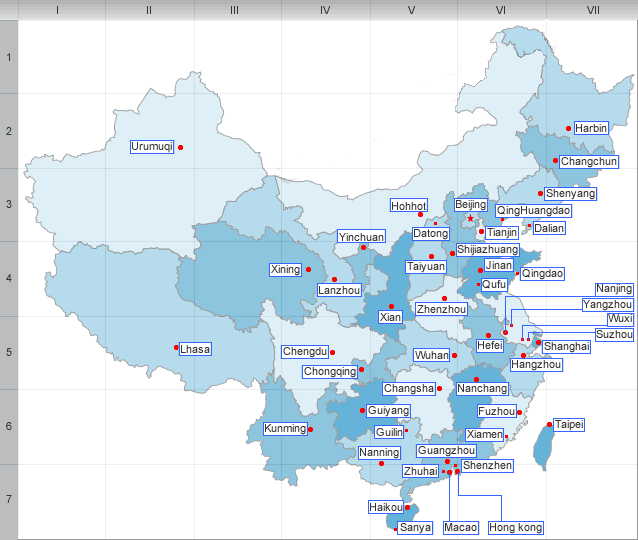Hami Prefecture Overview
The city of Hami, 595 kilometers from Urumqi and with an average elevation of 760 meters, covers an area of 79,000 square kilometers with an urban area of twenty-three square kilometers.
Hami Prefecture has a population of 400,000 of which the Han nationality makes up 67 percent and other minority nationalities 33 percent. The city of Hami includes 24 nationalities in its population of 300,000. The Han nationality accounts for 66 percent, the Uygur 26 percent, the Kazak 2.7 percent, the Hui 3.7 percent and the other 0.4 percent is made up of the Mongol, Manchu, Tibetan, Xibe, Ozbek, Yugur and Kirgiz nationalities.
Hami City has under its administration two towns (Qijiaojing and Yamansu), three neighborhood committees (Donghe, Xihe, Xinshi), two districts (Qinchen, Tianshan) and twenty-one townships.
With the Tianshan Mountains lying across its middle, Hami Prefecture has a few different climates. Generally, the climate of Hami is characterized by drought, change ability of temperature is 14.7??. The annual mean sunshine time is 3,234 hours, the longest in the Xinjiang Uygur Autonomous Region. The annual rainfall is 33.8 millimeters. The frost-free period in the area south of the Tianshan Mountains is 184 days. The prefecture has 586,400 hectares of forest. The prefecture has 1.73 billion cubic meters of exploitable water resources with a hydroelectric resources of 116,000 kilowatts (preliminary estimate). The waterpower resources exploited at present are less than one thirtieth of that total.
As one of the most mineral-rich areas yet to be prospected in the Xinjiang Autonomous Region, Hami Prefecture has natural resources of iron, copper, nickel, coal, phosphorus, manganese, gold, halite, Glauber?ˉs salt, and building materials. There are in the prefecture a number of wild animals including lynx, snow cock, snow leopard, Mongolian gazelle, bear, ibex, argali, Tianshan red deer, ermine, Asiatic wild ass and vulture. There are in the area over forty Chinese medical herbs such as the astragulus membranaceus, codonopsis pilosula, angelica sinensis, rhubarb, ophedra, coptia, snow lily and licorice root. Also the prefecture has supplies of hairy fungus and Tianshan mushroom.
| PREV:Aksu Prefecture Overview | Next:Hotan Prefecture Overview |



